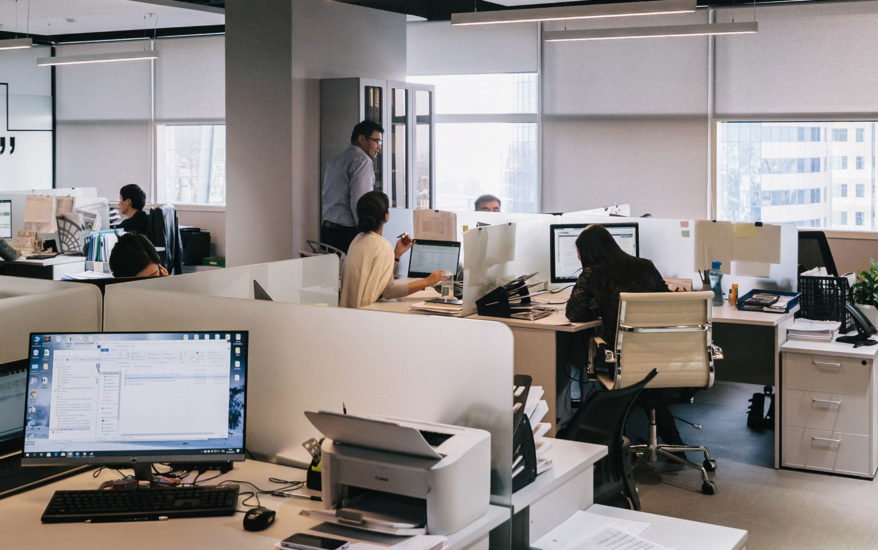
With the onset of COVID-19, the global workforce shifted to home working where possible, adjusting to makeshift office space in apartments, navigating parental duties, and kitting out the environment with the correct technology and tools to carry on with our day jobs.
As we adapted to working from home, the impact of the pandemic became an unknown, leading to uncertainty about the inevitable return to the office.
When would this happen? How would this happen? And how safe would it be?
Our attitudes towards the office has changed since lockdown, and employees have questions regarding their personal safety; while business re-evaluates the role our workplaces played prior to lockdown.
“Returning to the office is not about short-term needs, it’s about long term planning and coordination. It’s about employee choice and empowerment.” ~ Paul Statham, Founder & CEO, Condeco
What was once a place a large portion of the workforce would frequent full-time, the office is now considered to be a place where we will come together to meet and collaborate when needed.
What does our work life really look like going forward?
Rethinking the purpose of our workplaces
In a recent McKinsey report, the recommendation is for organizations to take the following four steps:
1. Reconstruct how work is done
During lockdown periods, many businesses had ‘simply transplanted existing processes to working contexts’ says McKinsey, ‘imitating what had been done before the pandemic’.
As lockdowns ease, it could become easy for businesses to revert to pre-pandemic ways of work, without the flexibility the workforce are now advocating.
In order to meet increased flexibility, business leaders need to reconstruct how work is done; from processes to practices. The first half of 2020 has taught us is there needs to be a blend of in-person meetings and collaboration with that of a more remote working culture.
2. Decide ‘people to work’ or ‘work to people’
The location of an HQ would often play a key role in employees making a job decision. Commuter time, cost of travel and other logistics were all elements employees, and employers factored in..
Now employers must ‘reconstruct how they work and identify what can be done remotely’, states McKinsey.
In the same research by McKinsey, they state employee segmentations can be reclassified by where the location of the employee will be most productive:
- Fully remote (net positive value-creating outcome)
- Hybrid remote (net neutral outcome)
- Hybrid remote by exception (net negative outcome but can be done remotely if needed)
- On-site (not eligible for remote working)
Employers can invest time evaluating who needs upskilling, which specific roles are targeted for hiring, and, giving employees the tools they need to make the decision where they will be most productive; knowing how much time to spend at headquarters, if there are local co-working spaces, and how at-home sets ups will be facilitated.
Related: On-Demand webinar – Flexible working is here to stay
3. Redesign the workplace to support organizational priorities
Workplaces have a mix of meeting rooms, workstations, private offices, informal collaborative spaces and canteens/kitchen areas; but all designed to ‘support specific organizational priorities’, as McKinsey says.
Facilitating ‘interactions that cannot happen remotely’ McKinsey suggests, will be critical; the workplace becomes a central space to meet and collaborate around specific projects, creativity and tasks that remote working don’t encourage effectively.
As we reposition our workplace and our organizational priorities, the role technology plays in a safe return to the office, is coupled with engaging employees with more flexibility.
4. Resize the footprint creatively
Finally, McKinsey suggests taking ‘a fresh look at how much and where space is required and how it fosters desired outcomes for collaboration, productivity, culture, and the work experience’.
From owned space (as in HQs), to flex spaces, co-working spaces and remote workspaces, organizations will need to re-examine their requirements:
- How does the space improve collaboration?
- What space is required for specific teams, individual employees?
- What would a future talent pool be looking for in their decision making?
Safety, wellbeing, collaboration, productivity and culture, are the five pillars to support a post-Covid workplace and we need to use them to support how we move our businesses into the future.
References:
Boland, B., De Smet, A., Palter, R. and Sanghvi, A., (2020). Organization and Real Estate Practices: Reimagining the office and work life after COVID-19. McKinsey & Company. [Viewed June 8, 2020]. Available from: https://www.mckinsey.com/business-functions/organization/our-insights/reimagining-the-office-and-work-life-after-covid-19



